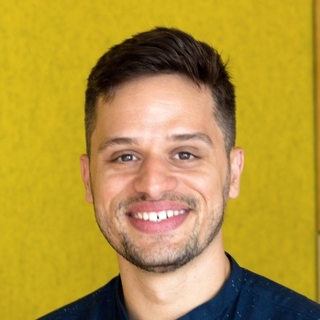
Hire Backbone.js Developers
Hire the Top 3% of Freelance Backbone.js Developers
Hire Backbone.js developers, on demand. Top companies and startups choose Backbone.js developers from Toptal for single-page application architecture, RESTful API integration, dynamic routing, modular front-end development, and more.
No-Risk Trial, Pay Only If Satisfied.
Hire Freelance Backbone.js Developers
Julien Delort
Julien has 15 years of experience as a software engineer with a passion for building full-stack apps. He especially shines in designing and building innovative user interfaces. Julien has a deep knowledge of React and loves finding UI solutions using CSS. His experience includes a software engineer role with Amazon for three years, where he got to work on various full-stack projects, both back end and front end, and he became the "go-to" person for front-end work and advice.
Show MoreRitu Gatiyala
Ritu is a full-stack developer with eight years of professional experience building highly scalable and responsive user interfaces for diverse teams around the world. She specializes in Vue and React web applications. In addition to development, she has also designed and prototyped applications and has a good sense of UI/UX. Having worked with both product and service-based companies, Ritu is passionate about building amazing user experiences and driving things end-to-end.
Show MoreSergei Garcia
A seasoned front-end engineer, Sergei Garcia boasts a decade of impact. Notably, he orchestrated a dynamic overhaul at Typing.com through a 2.5-year front end refactoring to React, revolutionizing UX for its 35+ million users. Celebrated for creating high-performance applications with exemplary UX, Sergei's empathetic leadership and zest for continual growth establish him as more than a tech maestro. He's also an exceptional mentor who elevates every team he joins to new heights.
Show MoreStephen Marx
Stephen has 14 years' experience developing for the web. Having started in the days before JavaScript frameworks and CSS pre-processors were popular gave him a solid understanding of the technologies underlying modern web development. Recently he enjoys building responsive and highly performant single page applications with React, Redux and Redux Saga. He is an excellent communicator and is experienced working both alone and in teams of any size.
Show MorePrashant R Jain
Prashant is a UI engineer and architect with more than 20 years of UI development. He likes to freelance because he gets to choose whether to take on short or long-term projects and be selective about the companies he works with. Prashant is a JavaScript guru interested in UI or JavaScript projects only. His biggest strengths are his exposure and experience of working with many npm packages, different industries, and projects.
Show MoreOscar Yuandinata
Oscar is a senior software engineer with over a decade of experience building APIs and applications and designing and maintaining databases and infrastructures for top companies such as Tokopedia, Mercari, and Travelio. For the last five years, he has specialized in iOS software development, building high-quality applications and mentoring other junior engineers.
Show MoreNathan Broadbent
Nathan has been developing web applications with Ruby on Rails since 2009 and iOS applications with Swift since 2015. He can pick up new programming languages or frameworks very quickly and is comfortable with a wide variety of technologies. Nathan is passionate about solving problems with elegant and maintainable code and delivers high-quality work on time.
Show MoreJames Akwuh
James is a technical lead and a software architect focusing on Node.js and JavaScript development. He worked for startups and big companies, such as Yandex & Adform. For the last three years, James has been working as a CTO of 20 engineers, defining the architecture and leading the development culture in the company. During his ten years engineering career, he worked with dozens of technology stacks, participated in 20+ meetups as a speaker, and built over 50 mobile and web applications.
Show MoreBenjamin Kuker
Benjamin is a solid developer with career highlights of working as a senior full-stack developer for a big data analytics startup, a payment processor, and a user testing service. He's worked across the entire development lifecycle and specializes in the front end. Benjamin is meticulous with implementation details while always considering and balancing broader stakeholder concerns. Communication wise, he is prompt, relevant, and professional.
Show MoreOmar Khan
Omar is a software engineer specializing in full-stack web development. He has many years of experience working with technologies such as Python, Ruby, and JavaScript. Omar is passionate about his work and diligent about writing code that is clean, readable, and well-tested.
Show MoreDan Neame
Dan is an experienced professional JavaScript engineer and team lead whose work has been showcased on the Discovery Channel, Google Experiments, and Gizmodo. While in full-time employment, Dan often spoke directly to clients from Bank of America, Samsung, and Unilever in order to identify product improvements. Dan has since gone freelance to seek new challenges and exciting projects.
Show MoreDiscover More Backbone.js Developers in the Toptal Network
Start HiringA Hiring Guide
Guide to Hiring a Great Backbone.js Developer
Backbone.js developers create and maintain scalable, data-driven applications with a flexible and lightweight architecture. This guide to hiring Backbone.js engineers discusses the key strategies to secure the right expert for your project, whether you are maintaining legacy systems, optimizing performance, or integrating your app with modern frameworks.
Read Hiring GuideBackbone.js Hiring Resources
More Resources to Hire Backbone.js Developers
Job Description TemplateInterview QuestionsCommon Mistakes... allows corporations to quickly assemble teams that have the right skills for specific projects.

Despite accelerating demand for coders, Toptal prides itself on almost Ivy League-level vetting.









How to Hire Backbone.js Developers Through Toptal
Talk to One of Our Client Advisors
Work With Hand-selected Talent
The Right Fit, Guaranteed
EXCEPTIONAL TALENT
How We Source the Top 3% of Backbone.js Developers
Our name “Toptal” comes from Top Talent—meaning we constantly strive to find and work with the best from around the world. Our rigorous screening process identifies experts in their domains who have passion and drive.
Of the thousands of applications Toptal sees each month, typically fewer than 3% are accepted.
Capabilities of Backbone.js Developers
Empower your web applications with Toptal’s Backbone.js experts, who excel at creating structured, single-page apps that manage complex data flows and deliver responsive, maintainable interfaces.
Single-page Application (SPA) Development
Modular Application Architecture
Custom Views and Event Handling
API Integration With RESTful Services
Front-end Data Binding and Synchronization
Routing and Deep Linking
Custom Plugins and Extensions
Backbone.js With Underscore.js and jQuery
Performance Optimization for SPAs
Cross-browser Compatibility
FAQs
How quickly can you hire with Toptal?
Typically, you can hire Backbone.js developers with Toptal in about 48 hours. For larger teams of talent or Managed Delivery, timelines may vary. Our talent matchers are highly skilled in the same fields they’re matching in—they’re not recruiters or HR reps. They’ll work with you to understand your goals, technical needs, and team dynamics, and match you with ideal candidates from our vetted global talent network.
Once you select your Backbone.js developer, you’ll have a no-risk trial period to ensure they’re the perfect fit. Our matching process has a 98% trial-to-hire rate, so you can rest assured that you’re getting the best fit every time.
How do I hire Backbone.js developers?
To hire the right Backbone.js developer, it’s important to evaluate a candidate’s experience, technical skills, and communication skills. You’ll also want to consider the fit with your particular industry, company, and project. Toptal’s rigorous screening process ensures that every member of our network has excellent experience and skills, and our team will match you with the perfect Backbone.js developers for your project.
How are Toptal Backbone.js developers different?
At Toptal, we thoroughly screen our Backbone.js developers to ensure we only match you with the highest caliber of talent. Of the more than 200,000 people who apply to join the Toptal network each year, fewer than 3% make the cut.
In addition to screening for industry-leading expertise, we also assess candidates’ language and interpersonal skills to ensure that you have a smooth working relationship.
When you hire Backbone.js developers with Toptal, you’ll always work with world-class, custom-matched Backbone.js developers ready to help you achieve your goals.
Can you hire Backbone.js developers on an hourly basis or for project-based tasks?
You can hire Backbone.js developers on an hourly, part-time, or full-time basis. Toptal can also manage the entire project from end-to-end with our Managed Delivery offering. Whether you hire a Backbone.js developer for a full- or part-time position, you’ll have the control and flexibility to scale your team up or down as your needs evolve. Our Backbone.js developers can fully integrate into your existing team for a seamless working experience.
What is the no-risk trial period for Toptal Backbone.js developers?
We make sure that each engagement between you and your Backbone.js developer begins with a trial period of up to two weeks. This means that you have time to confirm the engagement will be successful. If you’re completely satisfied with the results, we’ll bill you for the time and continue the engagement for as long as you’d like. If you’re not completely satisfied, you won’t be billed. From there, we can either part ways, or we can provide you with another Backbone.js developer who may be a better fit and with whom we will begin a second, no-risk trial.

How to Hire Backbone.js Developers
Demand for Backbone.js Developers Continues to Expand
Though modern frontend development is dominated by frameworks like React, Angular, and Vue, Backbone.js, or Backbone remains vital in certain use cases. It is a minimalist JavaScript library and a pioneer in structuring client-side web applications. The framework is lightweight and flexible, and it plays a critical role in maintaining legacy projects by managing data and the user interface. For example, companies like Atlassian and WordPress have historically used it, and the framework still ranks in the top 10 JavaScript libraries used across the internet. In addition, it can also integrate with newer libraries like Marionette.js, jQuery, or even React to enhance functionality without a complete rewrite.
As a result, skilled Backbone.js programmers are invaluable assets to many large enterprises and legacy systems, helping with system maintenance and migrations. Unfortunately, such experts are in short supply. Businesses that still rely on Backbone.js frequently struggle to find experienced developers who understand both its architecture and strategies for integration with modern technologies.
This guide will help you overcome these challenges and find the ideal expert for your project. It provides essential skill requirements, interview questions, and job description tips to streamline the hiring process, enabling you to attract top-notch web programmers.
What attributes distinguish quality Backbone.js developers from others?
Backbone experts build, maintain, and modernize single-page applications (SPAs). Modern tools like React, Vue, or Angular are often the best fit for projects built from scratch due to their advanced features geared toward complex web applications. Many developers integrate Backbone.js with these frontend tools to enhance existing applications without a complete rewrite. In addition, these software engineers frequently refactor and optimize legacy applications.
Strong developers combine broader JavaScript expertise, framework-specific knowledge, and experience with modern tools to build streamlined web apps. Beyond writing code, they implement scalable, high-performance solutions and design modular and testable codebases.
Backbone.js Core Architecture and JavaScript Mastery: Programmers must be comfortable using models, collections, views, and routers to structure SPAs. They should understand how to optimize the Model-View structure, handle complex event-driven architectures, and manage large data sets efficiently while preventing issues like memory leaks. Since the library is minimalistic and depends heavily on JavaScript, expertise in ES6+ features, closures, prototypes, asynchronous operations, and event delegation is essential.
Modern Front-end Framework Expertise: Many businesses modernize their apps with React, Vue, or Angular or entirely migrate them over. Experts should understand how to integrate these frameworks into existing projects, whether by embedding React components within Backbone views or gradually migrating the codebase to a more modern stack. A developer’s ability to achieve smooth interoperability between old and new technologies allows companies to enhance UI/UX and extend application lifespans efficiently.
Performance Optimization Skills: Competent web developers know how to fine-tune applications for speed and efficiency. They understand how to minimize reflows, optimize event handling, and reduce unnecessary DOM manipulations. Moreover, they guarantee performance at scale using techniques such as request throttling, debouncing, and lazy loading.
API Integration Abilities: Beyond structuring application logic, skilled developers facilitate smooth data exchange between the app’s front end and back end. Backbone.js often relies on RESTful APIs for dynamic content updates. Though coders don’t need to be experts in back-end development, they are prepared to handle API requests, parse JSON responses, and implement error handling. In addition, coders understand how to use one of two options for handling API calls: jQuery (a traditional approach) or modern approaches like the Fetch API or Axios.
How can you identify the ideal Backbone.js developer for you?
Finding the right specialist depends on your project needs and existing tech stack. Hiring managers must assess whether they need a specialist for system maintenance, incremental migration, or new feature development. Candidates with experience in large-scale legacy projects best suit maintenance projects, while experts versed in newer technologies like React, Vue, or state management tools like Redux are a good fit for migration projects. Once you have determined the project complexity and technology gaps, you can consider hiring a junior, mid-level, or senior developer.
Distinguishing Between Junior, Mid-Level, and Senior Developers
Junior developers are prepared to work on minor bug fixes and basic feature additions or assist with maintenance under senior guidance. Since many projects involve legacy app maintenance or migration to a modern framework, there are fewer cases where it makes sense to hire a junior engineer. If you are looking for one anyway, narrow in on candidates with foundational JavaScript skills and familiarity with relevant concepts. Junior talent should understand models, collections, and views but may struggle with complex application architecture, performance optimization, or integration with modern tools.
Mid-level developers can take ownership of features and maintain legacy applications. They are particularly suited to companies that need to enhance existing functionality while ensuring backward compatibility. As part of maintenance efforts, they can optimize data flow, refactor legacy code, introduce modular design patterns, or transition parts of the application to a modern framework. Look for hands-on experience, especially integrating modern tools like Webpack, ES6 modules, or Redux.
Senior developers are essential for businesses managing complex applications or planning a gradual migration to modern frameworks like React, Vue, or Angular. Most projects will require at least one senior developer to lead improvements to legacy systems. These experts possess a deep understanding of JavaScript best practices, architectural design, and performance fine-tuning, and they have many years of experience. Finally, they act as technical leaders, mentoring team members and guiding best practices around testing, build automation, and long-term scalability.
Incorporating Modern Front-end Frameworks into Legacy Applications
Though Backbone.js was a groundbreaking library a decade ago, modern alternatives are preferred for new projects. It offers fine-grained control over the DOM and lightweight architecture, but companies maintaining legacy applications should consider whether to modernize or integrate newer libraries incrementally to extend their application’s lifespan.
One option when updating legacy applications is incrementally replacing components with React, Vue, or Angular while maintaining core functionality. In addition, reinforcing code stability through improved documentation, modularization, comprehensive testing, and performance optimizations can help extend application longevity. Developers working on these projects have experience refactoring legacy code and integrating modern libraries without disrupting existing workflows.
If you plan to gradually replace Backbone with a modern framework, consider whether to choose React, Vue, or Angular. This decision depends on your project priorities and the existing application development team. React is a popular JavaScript library offering component-based user interfaces and efficient rendering through its virtual DOM. Vue is an open-source progressive framework praised for its simplicity and ease of use in creating single-page applications. Unlike React and Vue, Angular is a full-fledged framework with built-in state management. Based on your choice, identify an expert with the corresponding skillset.
Complementary Skills
The best candidates bring not only fundamental JavaScript and web development skills but also experience with technologies relevant to maintainability or modernization efforts. Depending on your business needs and framework of choice, look for strong experience in React, Vue, or Angular. In addition, all candidates should be familiar with relevant utility libraries, build tools, and testing frameworks to keep web applications running smoothly and efficiently. Finally, beyond technical skills, project management or agile experience may be necessary in some cases (e.g., on a self-managed team).
React: Applications using React require experts prepared to integrate React components within a Backbone architecture and use techniques like event-driven synchronization or Redux middleware to integrate React state management with the app’s models. They should understand the React basics required to manage UI state, such as component lifecycle and the useEffect and useState hooks. Additionally, understanding reconciliation and virtual DOM concepts helps optimize rendering performance when transitioning from event-driven updates.
Vue: Developers who integrate Vue into projects have experience using Vue’s composition API, directives, and reactivity system to manage component state while syncing with existing models. In addition, experience with Vuex or Vue Router facilitates a smooth transition to using Vue to handle global states or routing, if desired.
Angular: Finally, coders working with Angular should possess expertise in TypeScript and Angular’s modular architecture. Migration experts have experience converting views into Angular components while maintaining application logic and state management. Strong candidates will understand RxJs for reactive programming, particularly in handling asynchronous data streams and state management within Angular services; this achieves smoother integration between Angular services and Backbone models.
Underscore.js or Lodash: Backbone.js’s only hard dependency is Underscore.js, a utility library that provides functional programming helpers. As a result, developers must understand how to use functions like its collection methods (e.g., map, filter, and reduce), object manipulation utilities, and optimization features (e.g., debounce and throttle). Lodash is a more feature-rich alternative to Underscore.js, so if your team prefers Lodash, find an expert familiar with the mentioned functions in Lodash.
Webpack and Module Bundlers: In older applications, developers must often modernize the build process to optimize performance and manage dependencies effectively. Look for a strong track record of modular architecture and experience with Webpack, as well as legacy build tools like RequireJS or Browserify, which were commonly used in Backbone.js applications before ES6 modules became standard.
Testing Frameworks: Robust testing practices are critical for application reliability and maintainability, helping developers prevent bugs and catch regressions early. On the unit testing side, ensure that candidates have experience using Jasmine, Mocha, or Jest to verify that models, collections, and views perform as expected. Familiarity with integration testing tools like Karma or Cypress adds another layer of validation, ensuring that the application’s parts work together effectively. Finally, end-to-end testing tools like Protractor or Cypress can verify data flow and event handling.
How to Write a Backbone.js Developer Job Description for Your Project
A well-crafted job description plays a significant role in attracting the right specialist for your project, especially in the face of Backbone.js hiring challenges. To start, specify whether you need a programmer to maintain a legacy application, integrate an app with newer frameworks, or migrate an existing system to modern technologies. Clearly state the desired technical skills and project requirements, including whether you’ll need someone specializing in React, Vue, or Node.js based on your modernization plans. You should also include vital non-technical details about the role: Is it part-time or full-time? Is there a preferred location or time zone? What is the onboarding process like?
Finally, a precise job title will help match you with strong candidates. Example roles include “Senior Backbone.js Developer” or “Front-end Engineer (Backbone to React Migration).” To reach a larger candidate pool, consider using a broader title like “JavaScript Expert (Backbone.js and SPAs).”
What are the most important Backbone.js developer interview questions?
The interview process should assess candidates’ knowledge of Backbone and their broader understanding of JavaScript development practices. If you plan to modernize your app with a modern frontend framework, consider including React, Angular, or Vue interview questions.
Can you explain how models, views, collections, and routers interact?
Understanding these core components helps a developer architect scalable and maintainable applications, avoid design pitfalls, and create high-quality code. A strong response will describe how Backbone.js uses these components to structure applications: Models represent the app’s data, collections manage groups of models, views handle the display logic, and routers handle navigation. The candidate should also explain how these components communicate and keep the data and UI in sync, such as how models trigger events that views respond to.
How do you handle data binding and synchronization between the client-side application and the back end?
Keeping client-side and server-side data in sync is critical for building responsive, dynamic applications and providing a smooth user experience. Developers should demonstrate their understanding of data handling by explaining how models interact with REST APIs to fetch and save data and how the sync() method facilitates communication between the client and server.
How do you optimize Backbone.js applications for performance, particularly with large data sets?
Performance optimization ensures an app is scalable, responsive, and user-friendly, even when working with complex data sets. Look for an answer discussing techniques like lazy loading, pagination, and efficient DOM manipulation. Developers also use event delegation or caching to reduce unnecessary re-renders. Senior performance experts should be able to explain their experience with performance bottlenecks and effectively manage app state on large projects.
Have you worked with Backbone.js in combination with other frameworks, such as React, Angular, or Vue? How did you approach the integration?
This question is critical if you plan to integrate a legacy project with newer technologies; you will want an expert with hands-on experience modernizing applications. A candidate should discuss managing state synchronization and ensuring that Backbone’s data layers interact well with modern frameworks’ component-based architectures. This project may best suit a senior coder who has handled challenges like synchronizing Backbone.js models with React’s state or integrating an app’s routing system.
Why do companies hire Backbone.js developers?
Companies hire Backbone.js engineers to leverage the framework’s lightweight architecture and flexibility, particularly when maintaining or modernizing legacy applications. They often perform integrations with modern frameworks or gradual migrations to popular technologies like React, Angular, and Vue. Their expertise is valuable for extending the life of existing applications.
Backbone.js offers flexibility and control over application structure, letting developers design tailored and scalable solutions using a minimalist approach. An engineer’s ability to combine Backbone.js with contemporary frameworks helps companies meet the needs of legacy applications while benefiting from cutting-edge solutions. Skilled Backbone.js developers remain a strategic asset for businesses that require custom, performant, and scalable web development solutions.
Featured Toptal Backbone.js Publications
Top Backbone.js Developers Are in High Demand.

























